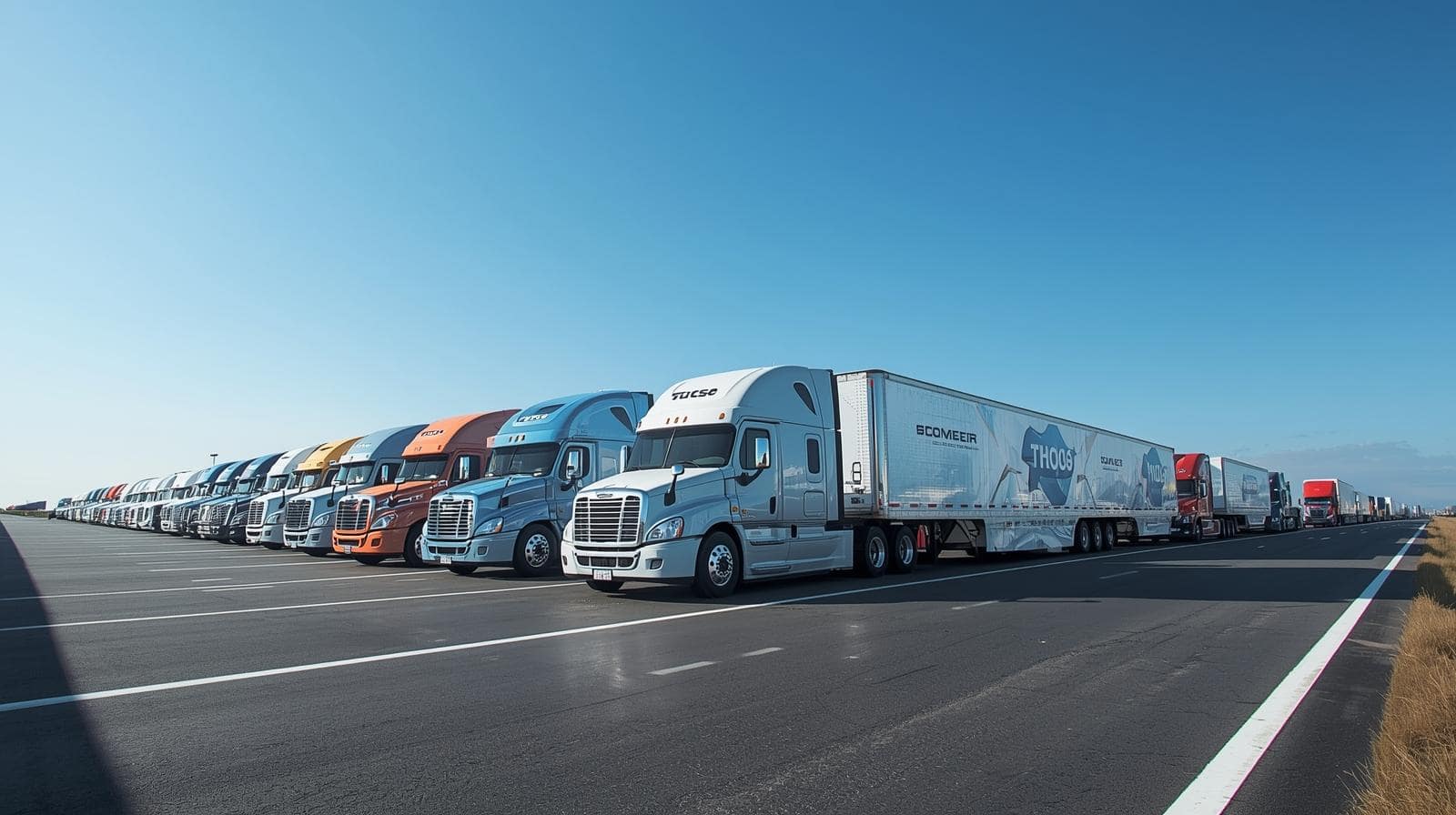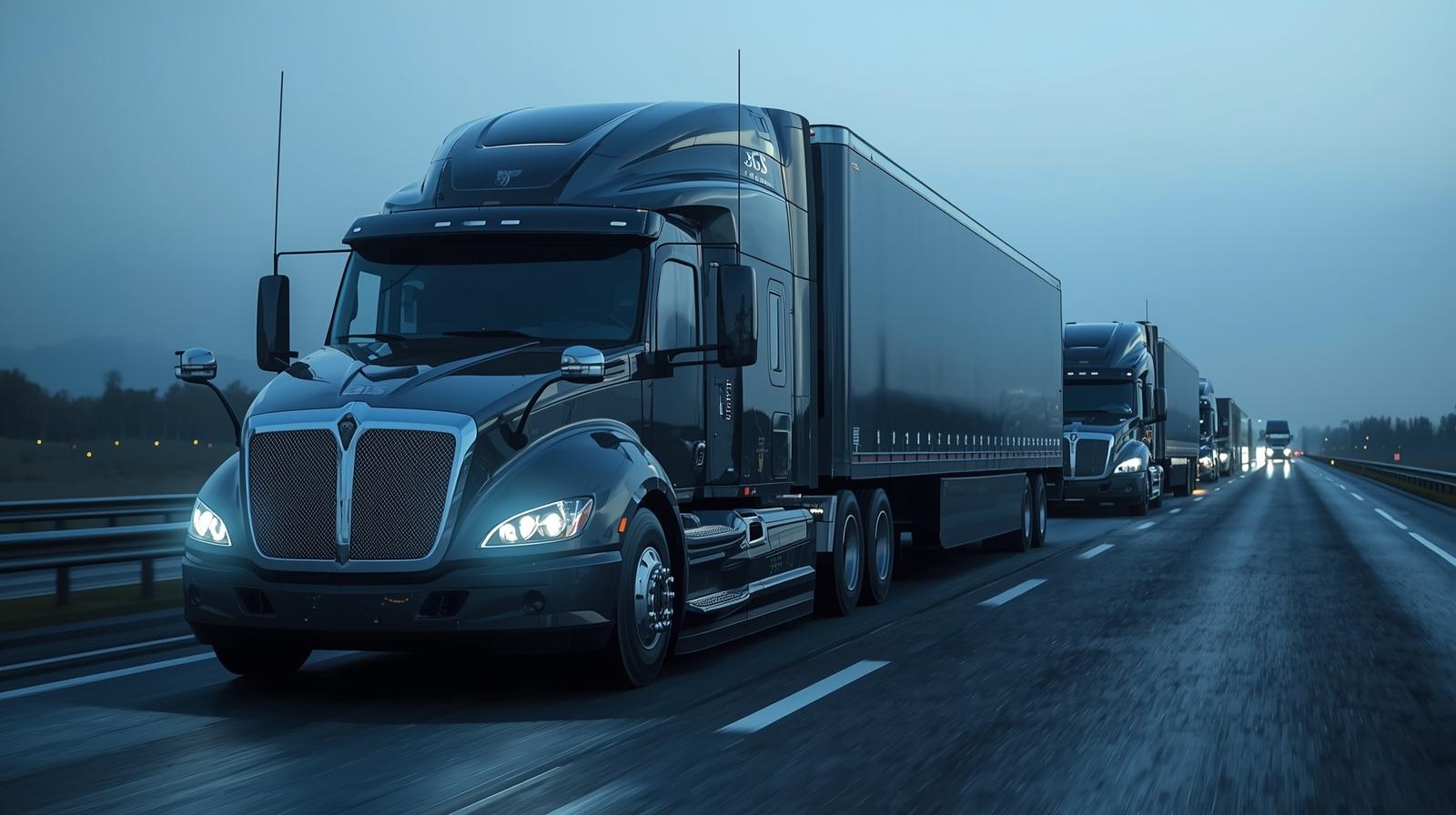Contents
- Why Consolidation Transforms Fleet Operations
- Technologies That Power Successful Fleet Consolidation
- Operational Advantages of a Unified Fleet Platform
- Strategic Benefits for Carriers
- Comparison Table: Fragmented Fleet Stack vs Unified Platform
- FAQ
- 1. Why is fleet tech consolidation becoming essential?
- 2. Does consolidation help with compliance?
- 3. Does a single platform reduce downtime?
- 4. How does a unified system improve dispatch efficiency?
- 5. Does consolidation save money?
- 6. Can drivers benefit from a unified platform?
- 7. Does consolidation improve safety?
- 8. Is consolidation hard to adopt?
- 9. Can a unified platform integrate with existing systems?
- 10. What platform offers true fleet tech consolidation?
Fleet operations become chaotic when technology grows in pieces. Carriers often layer new systems on top of old ones — an ELD here, a GPS tracker there, a standalone dashcam, a separate dispatch tool, and another platform for maintenance. Each vendor solves one problem but creates another: mismatched data, inconsistent reporting, double entry, and unnecessary complexity.
A consolidated fleet platform eliminates those weaknesses by centralizing everything into one environment. It behaves like a digital headquarters where dispatch, safety, compliance, and maintenance share the same live dataset. Every department sees the same truth in real time. The result is a system that moves as one instead of functioning as fragmented parts.
Why Consolidation Transforms Fleet Operations
A unified platform becomes the backbone of modern fleet management. Its biggest advantage is clarity. When all tools communicate automatically, carriers avoid blind spots that slow decision-making.
Unified Data Creates a Complete Operational Picture
Isolated systems produce incomplete, conflicting records.
Consolidation merges all data streams:
- ELD logs
- live GPS locations
- dashcam events
- speed and braking behavior
- load status
- routing details
- vehicle health
- fuel consumption
- communication logs
Managers view operations without missing context. A single dashboard connects compliance with dispatch, safety with routing, and maintenance with driver behavior.
Lower Costs and Vendor Consolidation
Fragmented tech stacks create recurring waste. Multiple vendors mean:
- multiple contracts
- multiple support teams
- multiple training programs
- duplicated features
A consolidated platform replaces overlapping tools with one subscription. Carriers save money without reducing capability.
Better Driver Adoption and Fewer Workflow Interruptions
Drivers often juggle several apps.
Switching between them wastes time and increases frustration.
A unified platform reduces digital clutter:
- one login
- one workflow
- one messaging system
- one map
- one ELD interface
Drivers complete tasks faster because the entire system follows a logical flow rather than bouncing between disconnected tools.
Simplified Compliance and Smoother Audits
Audits become simple when data is unified. Log edits, DVIRs, sensor data, and location records appear in one report. Consolidation improves compliance accuracy by:
- reducing manual entry errors
- preventing mismatched timestamps
- eliminating data loss between platforms
- ensuring logs auto-sync with GPS and engine data
Compliance officers work from one reliable source instead of hunting across different portals.
Technologies That Power Successful Fleet Consolidation
A strong consolidated platform integrates several core systems into one cohesive environment.
Intelligent ELD System
Hours-of-service data syncs instantly with:
- dispatch
- maintenance
- GPS route tracking
- safety reports
This creates complete oversight without extra steps.
Real-Time GPS Tracking and Routing
Real-time GPS becomes the backbone of operational awareness when it connects directly to every other fleet system. The platform shows dispatchers exactly where each truck is, how fast it’s moving, whether it’s idling, and how many driving hours remain before an HOS violation. Vehicle diagnostics feed into the same view, allowing teams to monitor engine health and detect early signs of mechanical issues without switching screens.
Routing updates automatically when conditions shift. The system reacts to:
- sudden weather changes
- traffic congestion
- road closures
- construction delays
- fuel availability
- customer-specific delivery windows
- real-time ETA shifts
This creates a routing process that adapts on the fly instead of relying on static plans. Drivers receive instant updates, and dispatchers avoid surprises because the platform predicts delays before they escalate. The fleet moves like a coordinated unit, not a collection of isolated vehicles.
Safety Monitoring With AI Dashcams
AI dashcams transform safety from a reactive process into a proactive one.
When camera data synchronizes with telematics, the system evaluates behavior holistically rather than through fragmented events. It detects:
- harsh braking that signals following distance issues
- speeding patterns tied to specific routes or times of day
- tailgating behavior that increases collision risk
- distracted driving indicators such as head tilt or screen glances
- lane drift caused by fatigue or inattention
- rapid acceleration spikes linked to aggressive driving
The platform blends camera footage with engine data, GPS signals, and sensor readings.
Safety managers see long-term behavioral trends instead of isolated incident reports. This clarity makes coaching more effective because feedback is tied to actual patterns, not assumptions. Drivers receive precise guidance that targets real risk areas and strengthens overall fleet safety.
Integrated Dispatch and Load Management
Integrated dispatching gives managers complete control of every load from assignment to delivery.
All operational data flows into one workspace, allowing dispatchers to:
- assign loads based on real-time driver availability
- track route progress without opening separate tools
- message drivers instantly through a built-in communication channel
- update customers with live status and ETA changes
- verify HOS compliance before committing to a route
- adjust plans dynamically as conditions evolve
The system eliminates miscommunication because all details—location, hours, truck condition, customer notes — display in the same panel. Scheduling errors diminish because dispatchers no longer work with outdated information or partial data. Loads move smoothly, timelines stay predictable, and the operation maintains consistent momentum.
Maintenance and Vehicle Diagnostics
Diagnostic data flows continuously into maintenance schedules. The platform tracks:
- fault codes
- engine temperature
- battery levels
- fuel efficiency
- mileage intervals
- DPF status
Maintenance teams act quickly because the system highlights risks before they become breakdowns.
Operational Advantages of a Unified Fleet Platform
Consolidation strengthens every part of the operation.
Faster and More Accurate Decision-Making
Every action relies on a complete, live dataset.
Dispatchers, compliance officers, and safety managers operate without guessing or waiting for updates.
Higher Vehicle Utilization
Unified HOS, GPS, and dispatch visibility help carriers reduce empty miles and reroute trucks efficiently.
Better Safety Performance
AI scoring and camera insights create consistent coaching programs. Drivers get direct feedback that reflects actual risk rather than isolated incidents.
Reduced Administrative Burden
Automation replaces tasks that previously required manual entry:
- log audits
- location reports
- DVIR processing
- trip summary creation
- fuel analysis
- incident documentation
Administrative work shrinks because one system handles data for all departments.
Scalability Without Complexity
Carriers expand more easily when technology is unified. Adding a new truck becomes simple:
- activate hardware
- log into the platform
- start driving
No juggling multiple vendors or configuring extra integrations.
Strategic Benefits for Carriers
Consolidation secures long-term operational stability. The biggest benefits include:
- fewer technical failures
- higher uptime
- faster customer response
- stronger cost control
- simpler onboarding
- accurate reporting for stakeholders
- predictable workflow patterns
A unified system becomes the foundation for data-driven fleet management.
Comparison Table: Fragmented Fleet Stack vs Unified Platform
| Feature | Fragmented Tools | Unified Platform |
| Data Consistency | Low | High |
| Driver Workflow | Complex | Streamlined |
| Dispatch Accuracy | Limited | Real-time |
| Safety Monitoring | Scattered | Fully integrated |
| Compliance | Manual | Automated |
| Costs | Multiple subscriptions | One consolidated system |
| Fleet Scalability | Complicated | Effortless |
FAQ
1. Why is fleet tech consolidation becoming essential?
Because it eliminates data silos, reduces costs, and creates a cohesive operational environment that improves efficiency.
2. Does consolidation help with compliance?
Yes. Unified systems produce accurate logs, automated reports, and consistent data that simplify DOT audits.
3. Does a single platform reduce downtime?
Absolutely. Consolidation connects diagnostics to maintenance planning, helping fleets address issues before breakdowns occur.
4. How does a unified system improve dispatch efficiency?
Dispatchers access HOS, GPS, routing, and driver status in one dashboard, reducing delays and miscommunication.
5. Does consolidation save money?
Yes. It eliminates duplicate tool costs, lowers administrative workload, and reduces training time.
6. Can drivers benefit from a unified platform?
Drivers work faster because they only use one app instead of multiple fragmented systems.
7. Does consolidation improve safety?
Integrated AI dashcams, telematics, and coaching tools create consistent and accurate driver scoring.
8. Is consolidation hard to adopt?
A well-designed platform transitions smoothly by replacing multiple tools with a single intuitive interface.
9. Can a unified platform integrate with existing systems?
Strong platforms offer optional integrations while minimizing the need for external tools.
10. What platform offers true fleet tech consolidation?
Platforms like EZLOGZ deliver full-service fleet management with ELD, GPS, safety, dispatch, compliance, and maintenance built into one system.










